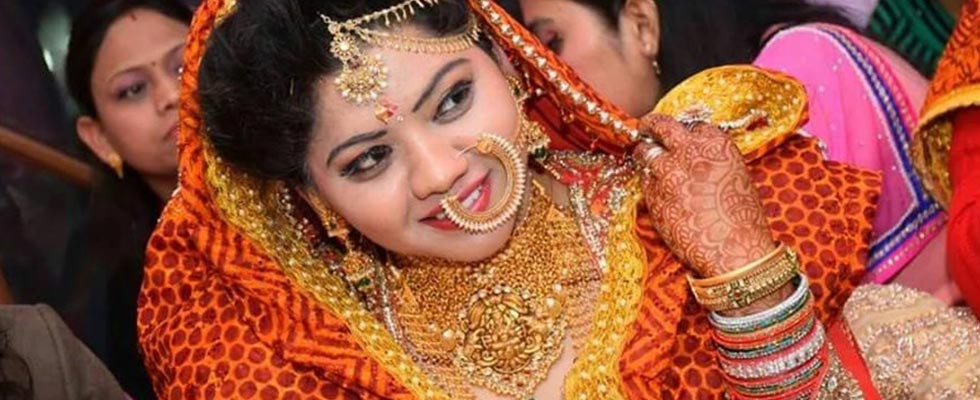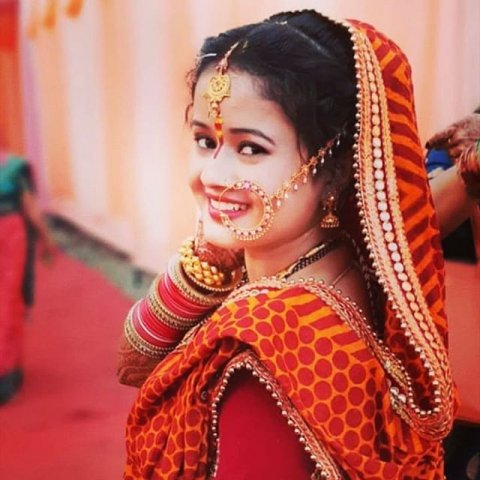Random Tandem
Chapter 2
It would be interesting for you to know the peaks that rank second and third highest in India after Kanchenjunga, are what you behold before you…. Namely, Nanda Devi followed by Kamet! Both these peaks that you see from the decks here are like the celebrities of the mountain world!! You may want to take a few deep breaths for this breathtaking reality to settle in….
As you inhale the clean mountain air, and it goes deep into your system, you will feel a sense of exhilaration, that most of us cannot feel in the cities and towns – simply because the quality of the air we breathe there is not as pure and vital as this…Lots of guests who visit, come with some little sniffle or allergy which we have become so prone to because of the polluted air we breathe in the cities, that we hardly notice these anymore. No amount of steam baths, menthol vapours and cough sweets can do for them, what just one day of the clean crisp air does….It works like balm, and heals them. And their nagging little ailments seem to just vanish into thin ‘mountain’ air!! Though they say, if you are lucky enough to be in the mountains, you are lucky enough! But why not get luckier? And since you are here in these pristine surroundings, why not make the most of it? So go grab a yoga mat and your yoga buddy and try a string of simple breathing exercises which will help you take in this fresh air and purify your insides…
Sit or stand with a tall spine. Place your hand on your rib cage. These are bones that protect your lungs. Keep your hand on your ribs as you breathe in and out deeply in big full breaths. Do you notice that your ribs move up and out when you inhale and down and in when you exhale?
Breathing exercises can help regulate how you feel. Some of them can help calm you, some can energise you and some can help maintain a balance between the two.

This first exercise can be done at any time and in any position to help you be calm. You could try it with your eyes closed too.
Open the palm of one hand. Take a deep breath in, and then exhale all the air. Now fold down one finger. Repay this process for each finger of your hand. You can try it with both hands for a ten-count breath. This is a good pose to practice when you are feeling tense or anxious. You can teach it to your friends and family, to help them stay calm too.
When we breathe in, the air fills our lungs, and the oxygen in the air goes into every cell in our body to energise them! So to ‘renew and recharge your batteries’, do the next two breaths a few times each.
Sit or stand in any comfortable position. Imagine that you are a flower vase. Now imagine that the vase is being filled with water from the bottom to the top. As you breathe in and out, imagine that the air is like that water, filling up every part of you.
Stand with your feet apart and arms outstretched. Then place your hands on your belly. Close your eyes if it is comfortable to you. Imagine that your belly is the centre of a big wheel. Now stretch your arms out again and imagine that your arms, legs and your spine are spokes of the wheel. Try and fill up the centre of the wheel as you breathe in, imagining that the air is travelling through all the spokes evenly as you breathe out.
In yoga, movement follows breathing, for example, we stretch on the inhale and relax on the exhale. This next Sunrise and Sunset pose is a good all-over warm up for any activity.
Stand up tall. Take 3-5 deep breaths.
On the next inhale, lift your arms above your head. Press your legs and feet down towards the ground and stretch your spine and waist towards the sky.
As you exhale, bend the upper half of the body at your waist down towards your legs, as if you were diving into a pool. Bend your knees a little at first, to avoid straining your back. Bend as far as you comfortably can. As you inhale again, open your arms wide and stand up slowly, stretching your arms towards the sky.
Repeat this 6-10 times. As you inhale and stretch, think of the glowing, rising sun. As you exhale and fold, think of the setting sun. These two work together to mark the passing of the day.
The people in the hills live their lives in sync with the Nature. They rise with the sun, and rest after sundown. In fact the movement of the sun plays a big role in the pahadi way of life. Though the people of Kumaon are known as Kumaonis, although in colloquial language, they also call themselves Pahari meaning “hill person”. The term, “Pahari” comes from the Hindi word ‘pahar’, meaning “mountain,” and so literally it means “of the mountains. A hardy people, the Kumaonis, are a patient and enduring lot, characterised by the terrain they live in.
The social structure is based on the extended family system, the eldest male member being the head of the family. Though women usually confine themselves to household activities, more often than not they are also found working shoulder to shoulder alongside the men in the fields and forests. They are respected in society and no religious ceremony is considered complete without their participation.
On such occasion, it is mandatory for all married ladies of the family to wear the ‘Rangwali Pichhaura’. The Pichhaura is a traditional ‘odhni’ or veil. An entirely handmade piece, in olden days it was made at home. A couple of metres of white cloth was washed and then dyed saffron with vegetable colours and then red dots were hand painted with the help of a coin wrapped in cloth. The two colours used in the Pichhaura have special significance – saffron represents all things holy, while red stands for energy. Final embellishments of golden kinaris and jhalars complete the festive look. In olden days, this garment was considered a family heirloom and was passed down from one generation to another. It is interesting to note that widows wear the Pichhaura too, who as per social norms don’t usually wear colourful clothing.

Now of course, newer techniques have come into use in the making of this traditional clothing. Fast colours and block prints are being widely used. It may be interesting for you to know that one such factory that has been printing the Pichhaura since 1971, is owned by one Mr. Majid Hussain. That a sacred Hindu garment is being made by a Muslim outfit in the heart of Lucknow – O! If only we would wake up and realise how strongly each one of us is intertwined and how deeply we are woven together….like ‘tana and bana’…the two threads of a loom…. to create this unique social fabric of our country!
 Along with the Pichhaura, it is customary for the womenfolk to wear the ‘nath’ or the nose ring on all religious and ceremonial occasions. As per the tradition, the maternal uncle gifts the “nathuli’ to the bride on her wedding day. The story goes that the size and weight of the nose ring fluctuates with the fortunes of the family – the better the income, the heavier the nose ring! In olden days it was worn all day long and at bed time it was worn around the neck. When questioned about this big weighty piece of jewellery, the older generation say that they are genetically designed to bear the weight of the Nath. And thanks to this signature piece of jewellery, a Pahadi function or shaadi, can be spotted instantaneously.
Along with the Pichhaura, it is customary for the womenfolk to wear the ‘nath’ or the nose ring on all religious and ceremonial occasions. As per the tradition, the maternal uncle gifts the “nathuli’ to the bride on her wedding day. The story goes that the size and weight of the nose ring fluctuates with the fortunes of the family – the better the income, the heavier the nose ring! In olden days it was worn all day long and at bed time it was worn around the neck. When questioned about this big weighty piece of jewellery, the older generation say that they are genetically designed to bear the weight of the Nath. And thanks to this signature piece of jewellery, a Pahadi function or shaadi, can be spotted instantaneously.
Talking of shaadi and women and the important role they play in the pahadi society, mention here must be made of a relatively recent social phenomena, up here in the hill, which has gained strong momentum in the recent years. An innate concern for all things that is deeply ingrained in the DNA or ‘nature’ of the womenfolk, is being tapped upon to come to the very rescue of Mother Nature herself! The strong emotional bonds that daughters feel for their ‘Mait’ or paternal home, especially because, after marriage it has to be left behind, has been sewn together with their consciousness about environmental issues to start a new social custom called the Maiti Movement. As a response, arising out of their concern and the awareness to act, the bride and groom plant a tree as a part of the wedding ceremony. This simple, yet sensitive gesture has led to the creation of many a ‘Maiti’ groves across many many villages. The responsibility of looking after these trees is handed over to the Maiti Behene – or the unmarried girls of the village. This movement has taken root so well that in certain parts of the hills, that the wedding card itself carries the details of the time and place of the Maiti plantation ceremony. Since this movement has led to the creation of a very valuable asset for the village community at large, occasions other than marriages are also being used conduct this tree planting ceremony.
The traditional attire for men at ceremonial occasions is a churidar pyjama, kurta and the distinctive kumaoni forage cap. And their foreheads – both women and men are ever donned with Pithiya – or ‘tilak’ – made of turmeric, rice and vermillion.
The local language spoken by the people of Kumaon is Kumaoni. The dialect however changes from place to place….it is said, that just like the moving waters of its river, the language and dialects of Kumaon is ever changing as one moves ahead…best summed up in a Kumaoni saying itself…
एक कोस में पाणि बदलु, द्वि कोस में बाणि – ‘Ek kos mein pani badlu, dvi kos mein bani’ which means that every one kos – the water changes and with every two kos, the language…. FYI – one kos is equivalent to 2 1/4 mile or 1.8 km.
Talking of pani, it is also said, that ‘pahar ki jawani aur pahar ka pani, pahar ke kaam nahi aye’. It is an irony of Nature, that these highland that serve as the womb for the mighty river systems of the north, themselves are not benefitted by them as they remain dependant for water on little hilly stream, that are more seasonal in character. It is a very common sight to see young children and women hauling and carrying water from little rivulets which expand and contract with the change of season. Likewise, the youth too, born and bred in the hills, are of little or no use to the area itself, as statistics show that 75% of young men from the villages leave home in search of better opportunities. The women, children and the elderly who are left behind, survive on the agriculture and money orders from their menfolk who have moved out. What started as outmigration during the colonial rule, when the hardy men from the area were recruited into the armed forces continues till date.
As you can see from the above examples, old Kumaoni sayings, known for their sharp sarcasm, are words of wisdom based on local knowledge and a keen sense of observation. However all the sayings and proverbs aren’t so incisive, and there are many that are equally humorous as well…
So on a lighter note, let’s peep into more examples of this very colourful language…
Aeke khadak pinalu (ऐक्कै खाडाक पिनाऊ)- It means sweet potatoes belonging to the same place – used to describe more than one person who share the same nature and characteristics i.e.two peas of a pod or birds of the same feather!
Aphi to jogi bagi ro chhi auran ke khvar mein haath. (आफिं तो जोगी बग रो छि औरन के ख्वर में हाथ) – Literally translated, it means the drowning Jogi (Holyman) is blessing others, which means that you cannot help others if you are in need of help yourself….much like the safety instructions on flights where the crew instructs the passengers, that in case of an emergency, to put on their own oxygen masks and safety gear before trying to help others…
Aag lage pani dauran (आग लगै पाणि दौणन्) – It means to run for water after burning a place down, i.e. trying to help after creating a problem i.e. Trouble makers turn trouble shooters!
Dai khani wal bhaji go patal chatni wal haat pad (दई खानिवाल् भाजि ग्यो पत्तल चाटनिवाल् हाथ पढ्) – It means the person who stole the curd ran away but the one licking the plate was caught i.e. while the actual culprit ran away, someone else was made the scapegoat! That’s amusing! Can you think of an incident in your life, which can be summed up by the saying above?
It would be interesting for you to know, that the kumaoni language does not have a script, and sad at the same time to know that it features in the Danger List of UNESCO’s Atlas of World Languages. So, why not learn a few lines of Kumaoni and surprise the locals around including those on the property itself with your newly acquired linguistic skill? See their faces light up with a brilliant smile the moment you strike a conversation….here’s a simple enough dialogue you could engage in… Maybe even with a member of the staff who may have looked after you well during your stay here…
Ram – नमस्कार! – Hello Krishna – नमस्कार! – Hello Ram – मैं राम छु। तुमर क्यै नाम भै? I am Ram. What is your name? Krishna – म्यर नाम कृष्णा – My name is Krishna Ram – क्यै हालचाल हैरि! – How are you? Krishna – सब ठीक ठाक छ। – All well Ram – भौते भल रौ छुट्टयों में! तुमर धन्यवाद भै। – I had a wonderful holiday! Thank you! Krishna – धन्यवाद आपुक लै। – Thank you too! Ram – ऐल्लै हिटनु पै! फिर भैटघाट होलि। – OK bye! We’ll meet soon again! Krishna – ऐल्लै हिटाै पै! यात्रा दैण हो । – Ok bye! Have a safe journey! Ram – धन्यवाद। – Thank you

